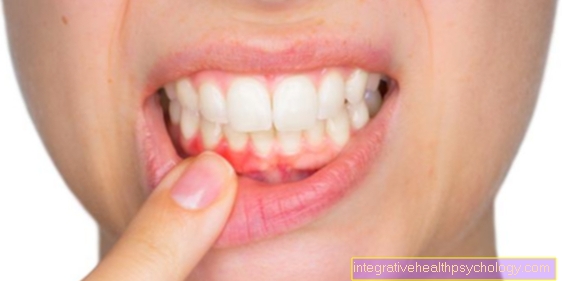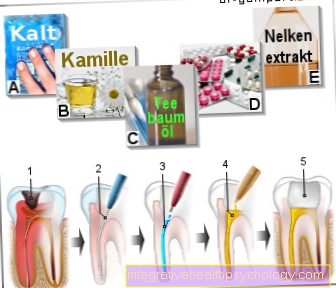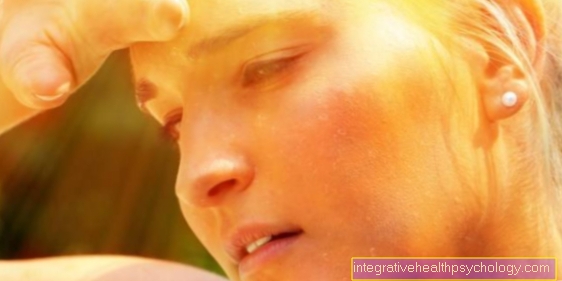Symptoms of neurofibromatosis type 1
Note
You are currently on the topic Symptoms of neurofibromatosis type 1.
On our other pages you will find information on the following topics:
- Neurofibromatosis type 1
- Life expectancy and therapy for neurofibromatosis type 1
- Neurofibromatosis type 2
- Symptoms of neurofibromatosis type 2
Cafe-au-lait stains and speckles
The first reason to see a doctor or human geneticist is often the so-called café-au-lait stains, which usually appear in early childhood. There must be at least six of these and they must be at least 0.5 cm in diameter before puberty and 1.5 cm afterwards. The spots are found in more than 99% of those affected and represent an increase in melanocytes. However, café-au-lait spots are also found in other clinical pictures or even in healthy people. Therefore further criteria are needed. In more than 40% of patients there are additional skin changes in the axel and groin. These are freckle-like pigmentations, which are also known as speckles or freckling.
Neurofibromas

Another characteristic are the neurofibromas specific for NF1. These are usually benign tumors of the nerve connective tissue that are found in more than 99% of those affected. They appear by puberty at the latest and only rarely degenerate into a malignancy. The size and number can vary widely, but there must be at least two of them. Since neurofibromas can occur all over the body, they are not infrequently a cosmetic problem and the increased accumulation of mast cells in the fibromas can lead to excruciating itching due to the release of histamine.
Plexiform neurofibromas
So-called plexiform neurofibromas represent a more functional problem. These tumors grow together like a network and can lead to organ displacement. With a probability of 5-10%, these plexiform neurofibromas can become malignant.
Skeletal deformities
Under Skeletal deformities one understands deformations of bones.
In addition to skin and nerve changes, those affected with neurofibromatosis often also show skeletal deformities. The spine and skull are particularly affected.The spine shows a sideways curvature with simultaneous hump formation, which the doctor calls kyphoscoliosis. It is also not uncommon for a malformation of the sphenoid bone to occur in the skull. This dysplasia of the sphenoid bone at the base of the skull can alter the eye socket in such a way that the affected person has a protruding eyeball, an exophthalmos. Short stature, asymmetry of the head, recurring joint dislocations or pathological fractures can also have a negative effect.
Attention and concentration disorders
Symptoms such as restlessness / hyperactivity, decreased stamina, attention deficits and concentration disorders are particularly evident in children. For some people, the symptoms persist into adulthood and lead to restrictions in school / work, social life and relationships.
Tumors
Neurofibromatosis patients show an increased risk of tumors, especially along the cranial or spinal nerves. For example, tumors along the eighth cranial nerve can lead to hearing damage and along the spinal nerves to paralysis.
Optic gliomas are visual tract tumors that are often only discovered by chance and occur in around 15%. If they appear in both eyes, there is almost a 100% probability that it is neurofibromatosis.
The iris of many people affected also shows tumor-like nodules that increase in number and size with age. These Lisch nodules are usually benign tumors that appear sharply defined, rounded and slightly raised and also originate from melanocytes.
Some patients with neurofibromatosis are prone to epileptic seizures or have learning difficulties.
Tumors also occur frequently outside the nervous system. Voluntary or skeletal muscles (rhabdomysarcoma), hematopoietic system (chronic myeloid leukemia), thyroid (thyroid carcinoma) or adrenal medulla (pheochromocytoma) can be affected.
More information on this topic: Connective tissue cancer









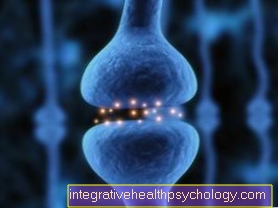
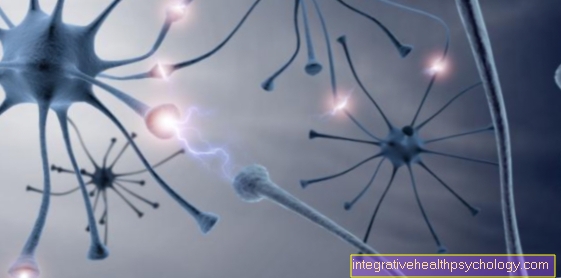






.jpg)
